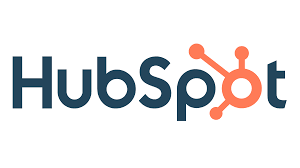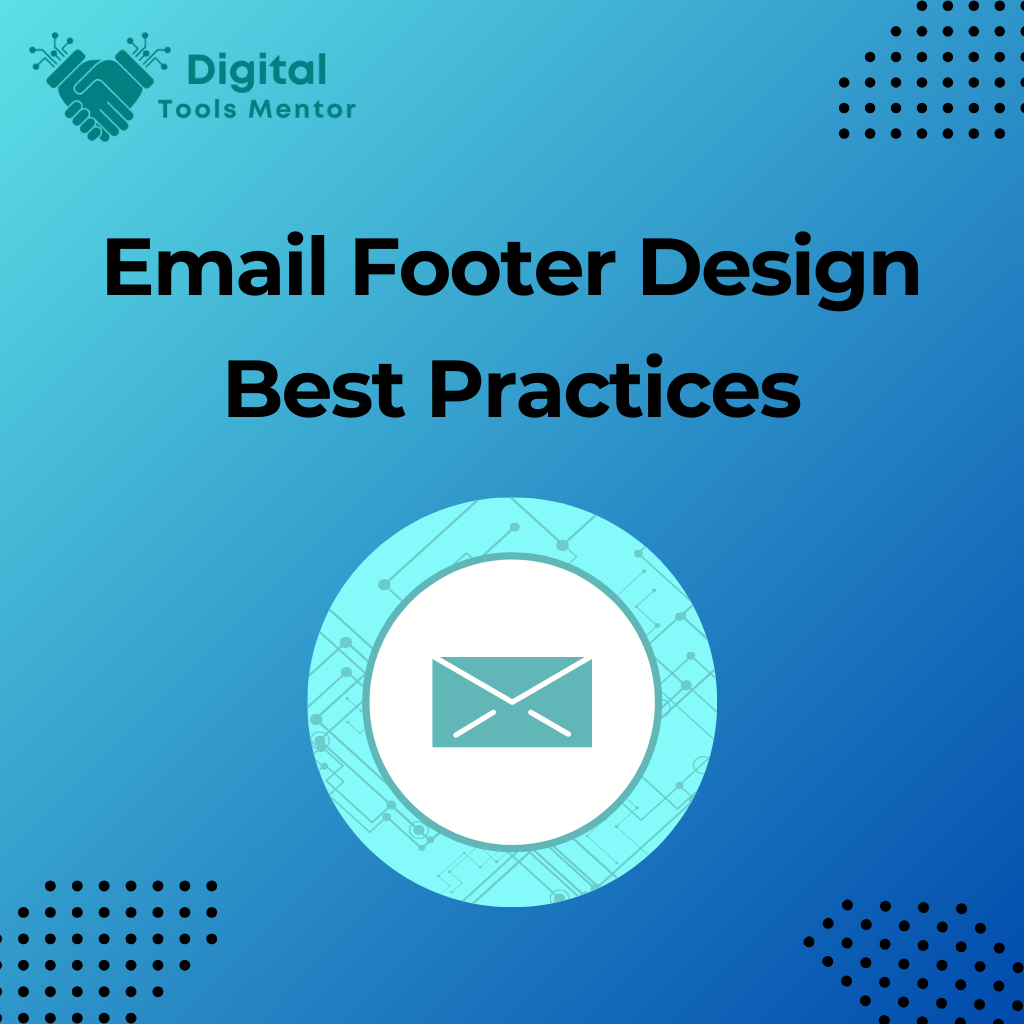Email Footer Design Best Practices
Email footers often go unnoticed in the grand scheme of email marketing strategies, yet they play a crucial role in both the functionality and legal compliance of communication efforts. Far from being just an obligatory space to meet legal requirements, a well-crafted email footer can serve as a powerful tool to enhance user engagement, provide valuable information, and reinforce brand identity.
A thoughtfully designed email footer acts as the final touchpoint in an email, offering additional opportunities for interaction. Whether it’s through helpful navigation links, social media icons, or legal disclaimers, the footer can influence how recipients perceive and interact with your brand. Moreover, in terms of compliance, the footer is not just a necessity—it’s a must-have feature that protects both the sender and the receiver by ensuring transparency and adherence to regulations like GDPR and CAN-SPAM.
In this blog post, we will explore the best practices for designing an email footer that not only meets legal standards but also captivates and engages your audience, turning a typically overlooked section into a valuable asset of your email marketing campaigns. Through smart design and strategic content placement, your email footer can enhance the overall effectiveness of your communications and leave a lasting impression.
Purpose of an Email Footer
The email footer might be at the bottom of your message, but it serves top-tier purposes that extend far beyond filling space. Understanding the multifunctional role of email footers is crucial for leveraging them effectively in your marketing communications. These functions include legal compliance, enhanced navigation, and increased reader engagement, all encapsulated within a design that must also align with your brand’s aesthetic.
Legal Compliance:
Email footers are critical for ensuring compliance with international laws and regulations. They typically house essential information such as unsubscribe links, which are mandatory under laws like CAN-SPAM in the U.S. and GDPR in Europe. These regulations require that recipients must have a clear, straightforward means to opt out of communications. Footers also commonly include the company’s physical address and registration details, adding a layer of transparency and trust to your emails.
Navigation:
Beyond compliance, footers can significantly enhance the usability of your emails. They often contain navigation links that act like a mini-sitemap, guiding recipients to various sections of your website or important external resources. Including links to popular products, FAQ sections, customer support, or even your company’s blog can drive further engagement and keep the conversation going even after the main message is conveyed.
Reader Engagement:
Footers can also be a strategic tool for boosting engagement. By including elements like social media icons, you invite recipients to connect on different platforms, expanding your interaction beyond email. Similarly, adding a short call-to-action, such as an invitation to provide feedback or check out a sale, can increase click-through rates and promote deeper interaction with your content.
Balance Between Functionality and Design Aesthetics:
Achieving a balance between functionality and design in an email footer is key. It should be visually appealing without being overwhelming, supporting the overall design of your email. The aesthetic should reflect your brand’s identity with consistent use of colors, fonts, and logos, but not at the expense of the footer’s readability and navigability. Minimalistic designs that organize information cleanly and logically are often the most effective, ensuring that the footer doesn’t just serve its purpose but also enhances the overall look and feel of the email.
In summary, the email footer serves as a critical component of your marketing emails. It ensures legal compliance, enhances user navigation, promotes broader engagement, and can significantly impact the overall effectiveness of your email marketing efforts. A well-designed footer, balancing both aesthetic and functional elements, is an integral part of creating a cohesive and effective email.
Explore 23 Best Email Marketing Softwares in 2025
Compliance and Legal Requirements
Email marketing is heavily regulated to protect consumers and ensure that marketers conduct their campaigns ethically and transparently. The email footer serves as a critical space to fulfill many of these legal obligations, including the inclusion of privacy policies, unsubscribe links, and company registration details. Understanding the implications of key regulations such as the General Data Protection Regulation (GDPR) and the Controlling the Assault of Non-Solicited Pornography And Marketing (CAN-SPAM) Act is essential for any marketer looking to maintain compliance and avoid potential penalties.
Key Legal Requirements:
- Unsubscribe Links: Both GDPR and CAN-SPAM laws require that your emails include an easy way for recipients to opt out of future communications. This link must be clear, conspicuous, and easy to use, typically leading to a simple page where the user can unsubscribe without needing to log in or provide additional information.
- Privacy Policy: Including a link to your privacy policy is crucial, especially under GDPR, which governs data protection and privacy in the European Union. This policy should detail how you collect, use, and protect your subscribers’ data.
- Company Registration Details: Depending on your location and the scope of your business, you may need to include your company’s physical address, registration number, and other corporate details in the footer to comply with local business communication regulations.
Implications of GDPR:
- GDPR impacts any business that collects or processes the personal data of EU citizens, regardless of the company’s location. The regulation emphasizes transparency, accountability, and the importance of consent. In the context of email footers, GDPR affects how you articulate your use of data and enforce privacy rights. It also requires that the process for withdrawing consent (i.e., unsubscribing) be as straightforward as the process for giving consent.
Implications of CAN-SPAM:
- CAN-SPAM applies to any commercial email message and sets requirements for commercial messages, gives recipients the right to have you stop emailing them, and spells out tough penalties for violations. CAN-SPAM requires that your footer include a valid physical postal address where you can receive mail, an unsubscribe link, and clear identification that the message is an advertisement or solicitation.
For email marketers, adhering to these legal requirements is not just about avoiding fines; it’s about building trust with your audience. A transparent and compliant email footer reassures recipients that your brand values their privacy and rights. It’s essential to regularly review and update your email footer content to align with the latest legal standards and best practices. This will not only ensure compliance but also enhance the credibility of your email communications.
Branding Consistency
Maintaining consistent branding from the email body to the footer is crucial in establishing and reinforcing your brand identity. Consistency ensures that every part of your email reflects your brand, creating a seamless experience for the reader. This not only enhances brand recognition but also strengthens trust and credibility among your audience.
Why Branding Consistency Matters:
- Recognition: Consistent use of visual elements makes your emails instantly recognizable to your recipients. This familiarity can increase open rates and engagement as subscribers come to know and trust your brand visuals.
- Professionalism: A cohesive brand presentation across all parts of your email, including the footer, signals professionalism and attention to detail, which can positively influence how recipients perceive your brand.
- Trust: When your emails consistently reflect your brand, it helps to build trust. Inconsistencies, on the other hand, can make your communications feel disjointed or untrustworthy.
Tips for Incorporating Brand Elements:
- Logo Placement: Your logo is a pivotal element of your brand identity. Include it in your footer to reinforce brand awareness. Ensure it links back to your website to facilitate easy access to more information about your business.
- Color Scheme: Use your brand’s color scheme consistently throughout the email, including the footer. This doesn’t mean that every element must be in a brand color, but the general palette should be representative of your brand. For instance, if your brand colors are blue and grey, these should feature prominently, helping to unify the email’s overall aesthetic.
- Fonts: Stick to the same font styles that are used across your marketing materials. Consistent use of typography helps maintain a uniform look and feel. If your brand uses a specific font, make sure it is web-safe; if not, select a similar, widely supported font to ensure proper display across all email clients.
- Graphical Elements: If your brand uses specific patterns, icons, or graphical motifs, consider how these can be subtly incorporated into your email footer. Even small touches, like a particular border style or a graphic that serves as a section divider, can enhance brand consistency without overwhelming the design.
- Voice and Tone: Consistency isn’t just visual. Ensure that any text in your footer, whether it’s contact information, disclaimers, or calls to action, aligns with the tone and voice of your brand. This includes the language you use for your unsubscribe link or legal disclaimers—every word reflects your brand personality.
Implementing these Tips:
Start by reviewing your current branding guidelines and ensure every element of your email, especially the footer, adheres to these standards. Regular audits of your email templates ensure that all components, from header to footer, are in alignment with your evolving brand strategy.
In conclusion, a well-branded email footer is not just an afterthought; it’s an integral part of your marketing message. By ensuring consistency in visuals and tone across every section of your email, you enhance the overall effectiveness of your communication and strengthen your brand’s presence in every interaction.

Navigation Links
The inclusion of navigation links in an email footer is a strategic approach to enhancing the user experience by facilitating access to additional resources and important sections of your website or social media platforms. Thoughtfully curated footer links not only extend the interaction with your recipients but also serve practical purposes, such as improving customer service and boosting web traffic.
Role of Footer Links in Enhancing User Experience:
- Ease of Access: By placing essential links in the footer, you provide recipients with easy access to useful resources without cluttering the main body of the email. This convenience is especially appreciated by users who may want to explore more about your brand at their own pace.
- Increased Engagement: Footer links can significantly increase engagement by directing readers to other relevant online platforms where they can interact with your content, such as your social media pages, blogs, or forums.
- Support and Guidance: Directing users to FAQs, support pages, or contact forms through footer links can preemptively resolve queries and enhance customer satisfaction by making help readily accessible.
Types of Links to Include:
- Contact Information: Provide a link to a page where users can find different ways to contact your business. This could include your phone number, email, or a contact form. Making it easy for customers to reach out can lead to better customer relationships and quicker resolutions to issues.
- FAQs: Frequently asked questions pages are invaluable resources for customers looking for quick answers. Linking to your FAQs in the email footer can reduce the number of support requests your team receives by empowering customers to help themselves.
- Customer Support: Direct links to your customer support or help center pages can facilitate immediate assistance, improving overall customer experience and satisfaction.
- Social Media: Including links to your social media profiles encourages users to engage with your brand across different platforms, which can enhance community building and brand loyalty.
- Privacy Policy and Terms of Service: These links are not just legal requirements; they also instill trust by transparently communicating your policies on data usage and the terms of service your business operates under.
- Blog or Articles: Drive traffic to your thought leadership or informational content by linking to your blog or specific articles. This not only boosts SEO but also positions your brand as an authority in your industry.
- Promotions and Events: If you have ongoing promotions, new product launches, or upcoming events, footer links can act as gentle reminders for users who might have skipped over that information in the body of the email.
Implementing Effective Footer Links:
Ensure that the footer links are clearly labeled and organized in a manner that does not overwhelm the user. Using icons along with text can help make these links more visually appealing and instantly recognizable. Regularly update and rotate links to reflect the most current and relevant resources, keeping the footer dynamic and useful.
In conclusion, well-planned navigation links in an email footer are more than just functional elements; they are opportunities to enrich the user experience, extend engagement, and provide valuable resources that reinforce customer satisfaction and brand loyalty.
Social Media Integration
Integrating social media buttons into your email footer is a strategic way to extend your engagement with subscribers beyond the email itself. This integration not only enhances the accessibility of your social channels but also encourages continued interaction, which can significantly boost your online presence and follower base.
Effective Integration of Social Media Buttons:
- Visibility and Accessibility:
- Ensure that social media icons are prominently placed within the footer so they are easily noticeable. Avoid cluttering them with too much information; instead, opt for a clean layout that makes each icon stand out.
- Use universally recognized icons for each platform to avoid any confusion and ensure that your audience can easily identify their preferred channels.
- Consistency in Design:
- Keep the design of social media buttons consistent with your brand’s aesthetic. This includes matching colors (if brand guidelines allow), styles, and visual motifs that resonate with your other marketing materials.
- Even though the icons should be visually integrated into the design of your email, they should still be distinct enough to be instantly recognizable as clickable elements.
- Strategic Placement:
- While the footer is a common place for social media icons, their placement within the footer should be strategic. Consider grouping them together in a clean, organized manner, making them one of the last elements viewers see as they scroll through the email, reinforcing their visibility.
Benefits of Promoting Social Channels in Email Footers:
- Enhanced Engagement:
- By providing direct links to your social media profiles, you’re inviting subscribers to interact with your brand on platforms they use daily. This continuous engagement helps keep your brand top-of-mind and can increase customer loyalty.
- Increased Followers:
- Including social media buttons in your email footers can directly contribute to an increase in followers. Subscribers who may not be aware of your social media presence get an easy way to connect with your brand on these platforms, expanding your reach and follower count.
- Unified Customer Experience:
- Offering multiple touchpoints for engagement through social media can lead to a more unified customer experience. Subscribers can choose how they want to interact with your brand, whether through direct emails or more dynamic social media interactions.
- Content Amplification:
- Social media allows for the amplification of the content shared via emails. Subscribers who follow your social channels are more likely to share and engage with content, increasing its reach and impact beyond the initial email recipients.
- Feedback and Insights:
- Social media platforms provide an avenue for instant feedback and customer insights. By encouraging email subscribers to follow and interact with your social channels, you can gather valuable feedback and gauge public sentiment towards your products, services, or content.
Integrating social media buttons into your email footer is more than just a tactic for aesthetic completeness—it’s a strategic move that can significantly enhance audience engagement and broaden your brand’s digital footprint. By making these buttons prominent, consistent, and easy to use, you invite ongoing interaction that can transform one-time viewers into long-term followers and active participants in your brand’s community.
Optimization for Mobile Devices
In today’s digital landscape, where over half of all email interactions occur on mobile devices, optimizing email footers for mobile usability is not just beneficial—it’s essential. A mobile-responsive footer ensures that all users, regardless of the device they use, have a seamless and accessible experience when interacting with your email content. This section outlines the importance of mobile-responsive design and provides practical guidelines to enhance the usability of email footers on mobile devices.
Importance of Mobile-Responsive Footers:
- Enhanced User Experience: A footer that adapts to mobile devices improves readability and interaction, making it easier for users to engage with the content without frustration. This adaptability prevents the potential loss of engagement or miscommunication that can occur when footers are not optimized for smaller screens.
- Increased Engagement Rates: Mobile-optimized footers are more likely to encourage clicks and interactions, such as following social media links, visiting web pages, or contacting customer support. This can lead to higher engagement rates and more effective marketing outcomes.
- Compliance with Best Practices: Mobile optimization is considered a best practice in email design. It aligns with the expectations of modern consumers who prefer brands that cater to their needs on mobile platforms.
Guidelines for Mobile-Responsive Footer Design:
- Simplified Layout:
- Design footers with a clear and uncluttered layout that works well on small screens. Consider stacking elements vertically rather than horizontally to ensure each element is easily accessible and visible without needing to zoom or scroll horizontally.
- Clickable Areas:
- Make sure that all clickable elements such as links, buttons, or social media icons have a large enough touch area. The recommended minimum size for touch targets on mobile devices is 44×44 pixels, according to Apple’s design guidelines. This size prevents mis-clicks and enhances the overall usability of your footer.
- Appropriate Text Size:
- Use a legible font size that readers can comfortably read without zooming in. A general rule for mobile screens is to use a body text size of at least 16 pixels. Headings or important information can be slightly larger to draw attention.
- Contrast and Color:
- Ensure there is sufficient contrast between text and background colors to aid readability under various lighting conditions, which is especially important on mobile devices that are often used in brightly lit environments.
- Responsive Design Techniques:
- Utilize CSS media queries to adapt the footer’s styling based on the device’s screen size. This can involve changing layouts, resizing fonts, or even modifying content that appears based on the available screen real estate.
- Test Across Devices:
- Regularly test your email footers across different mobile devices and email clients to ensure consistent performance and appearance. Tools like Email on Acid or Litmus can simulate how footers will look across various platforms and devices.
Creating a mobile-responsive email footer is crucial for connecting effectively with your audience in the mobile-first world. By implementing the above guidelines, you can ensure that your footer not only meets the functional requirements of your email but also enhances the user experience, leading to better engagement and satisfaction rates.
Use of Visual Elements
Incorporating visual elements such as graphics, icons, and minimalistic designs into an email footer can significantly enhance its appeal and functionality. However, the strategic placement and selection of these elements are crucial to maintaining visual harmony and ensuring that the footer does not become cluttered or overwhelming. Here’s how you can effectively use visuals in your email footers to capture attention while keeping the design clean and focused.
Strategic Use of Visuals:
- Graphics and Icons: Utilize simple, clear icons or small graphics to represent common footer elements like social media links, contact information, or legal disclaimers. Icons can help break up text, making the footer easier to navigate and more engaging. Ensure that these visuals align with your brand’s aesthetic and color palette to maintain consistency.
- Minimalistic Design: Adopt a minimalistic approach by focusing on the essentials. Use clean lines, ample white space, and limited color schemes to create a visually appealing footer that doesn’t distract from the content. This approach helps maintain the user’s focus on important elements like links or calls to action.
- Balance and Layout: Arrange visual elements in a balanced layout that aligns with the overall design of the email. Consider symmetry and alignment to enhance visual flow and make the footer appear more organized and professional.
Best Practices for Visual Harmony and Clarity:
- Consistency: Keep the style and sizing of icons and graphics consistent throughout the footer. This consistency helps build a coherent visual language that enhances brand recognition and trust.
- Size and Scale: Ensure that visuals are appropriately sized relative to the text and overall footer dimensions. Oversized icons can dominate the space, while too-small visuals might be overlooked or difficult to interact with, especially on mobile devices.
- Color Usage: Use color strategically to draw attention to key elements like clickable links or buttons. However, maintain a balance that complements the overall email design without overpowering it. Utilize your brand colors to reinforce identity but ensure that there is enough contrast to maintain legibility.
- Functional Imagery: If using images or decorative graphics, ensure they serve a functional purpose, such as visually indicating different sections within the footer or highlighting important legal information. Avoid purely decorative images that add visual clutter without providing value.
- Testing and Optimization: Regularly test different designs and layouts to see what resonates best with your audience. Use A/B testing to compare different visual approaches and gather data on user preferences and engagement metrics.
The strategic use of visual elements in email footers can transform them from simple information repositories to engaging, visually appealing components of your marketing emails. By adhering to best practices for visual harmony and clarity, you ensure that these elements enhance rather than detract from the user experience, making your emails more effective and enjoyable for recipients.
Testing and Iteration
Testing and iteration are fundamental to refining email marketing strategies, particularly when it comes to optimizing the design of email footers. By employing A/B testing (also known as split testing), you can experiment with different footer designs to determine which elements resonate best with your audience. This process not only improves the effectiveness of your emails but also enhances the user experience by tailoring content to audience preferences.
Importance of A/B Testing Footer Designs:
- Optimization: A/B testing allows marketers to make data-driven decisions that optimize the design and functionality of email footers. This might include testing different layouts, color schemes, link placements, or types of content to see what drives higher engagement.
- Personalization: By understanding what works best for your audience, you can tailor the footer to meet their needs and preferences, potentially increasing the relevance and personalization of the entire email.
- Innovation: Regular testing encourages a culture of innovation and continuous improvement. It enables marketers to stay current with design trends and audience expectations, keeping email content fresh and engaging.
Metrics to Monitor During Testing:
- Click-Through Rates (CTR):
- Overall CTR: Monitor the overall click-through rates of links in the footer to gauge the general effectiveness of its layout and content.
- Specific Link CTR: Track the click-through rates on specific links, such as social media icons, contact links, or promotional links. This helps identify which elements are most engaging to your audience.
- Engagement Metrics:
- Time Spent: Analyze the time spent on emails with different footer designs to see if a particular layout keeps readers engaged longer.
- Interaction Rates: Look at interaction rates with the footer, including hover data over links or how many users click on multiple links within the footer.
- Conversion Rates:
- If your footer includes calls-to-action, such as invitations to follow social media or check out blog posts, measure how these contribute to conversion goals like increased followers or blog readership.
- Bounce Rates and Unsubscribes:
- Although often overlooked, monitoring if certain footer designs lead to higher unsubscribe rates or increased email bounces (due to perhaps overly aggressive or irrelevant content) can provide valuable insights.
How to Implement A/B Testing for Footers:
- Segment Your Audience: Divide your audience into comparable segments to test different footer designs against each other.
- Test One Change at a Time: To accurately measure the impact of a specific change, alter only one element of the footer per test.
- Use Sufficient Sample Sizes: Ensure that the audience size for each test is large enough to generate statistically significant results.
- Review and Iterate: After analyzing the results, implement the successful elements and use the findings to inform further tests. This cyclical process ensures continual improvement.
A/B testing is an essential tool in the email marketer’s toolkit, especially for refining footer designs. By regularly testing and iterating on different elements of the footer, you can significantly enhance its effectiveness, ensuring that it actively contributes to your email marketing objectives while resonating with your audience.
Case Studies and Examples
Examining effective email footer designs from successful campaigns can provide valuable insights into best practices and innovative approaches. Here are examples from different industries, showcasing how strategic footer design can enhance engagement and fulfill business objectives. We’ll analyze the key elements that contributed to their success and how these can be adapted to various industries or brands.
Example 1: E-commerce Brand
- Design: This brand used a minimalist footer with clear, organized sections for navigation links, contact information, and social media icons. The use of a light color scheme with brand colors for links ensured easy readability and visual appeal.
- Success Factors: The footer included a prominently placed, eye-catching “Shop Sale” button, which led to increased click-through rates to the sales section of the website. Integration of social media icons also boosted their social following.
- Adaptation: Retailers or any customer-facing businesses can adopt this approach by emphasizing promotional links and ensuring social media platforms are easily accessible to increase customer engagement and drive sales.
Example 2: Technology Startup
- Design: This startup featured an interactive footer in their newsletter that included clickable icons for their latest app features, a small form for feedback, and quick links to their support page and user community.
- Success Factors: The interactive elements encouraged users to engage directly with new features and provide feedback, fostering a community feel and promoting user retention.
- Adaptation: Tech companies or any service-oriented business can utilize this footer style to enhance user engagement and gather valuable feedback, improving their product offerings and customer service.
Example 3: Nonprofit Organization
- Design: The nonprofit used a footer with a simple layout that included a donate button, contact information, and links to detailed stories about how donations are used. The design was complemented by compelling images and testimonials from beneficiaries.
- Success Factors: The clear call-to-action (CTA) for donations and the emotional appeal through beneficiary stories effectively encouraged contributions. Additionally, providing transparency about fund usage built trust with subscribers.
- Adaptation: Other nonprofits or organizations looking to increase contributions can replicate this approach by highlighting their CTA and using storytelling to connect emotionally with subscribers.
Example 4: Professional Services Firm
- Design: The firm’s email footer was distinguished by its professional layout featuring links to whitepapers, case studies, and the firm’s portfolio. It also included a subscription management link and legal disclaimers.
- Success Factors: The inclusion of educational resources helped establish the firm as a thought leader in its field, enhancing credibility and engaging potential clients.
- Adaptation: Consulting firms, law offices, or any B2B service providers can benefit from this approach by sharing expert content that underscores their authority and expertise in the industry.
These examples illustrate that an effective email footer must be thoughtfully designed to align with the brand’s goals and audience needs. Whether it’s driving sales, engaging users, soliciting donations, or sharing knowledge, the footer can significantly impact the effectiveness of an email marketing campaign. Businesses can take inspiration from these examples, adapting the elements that align with their brand identity and strategic objectives to create footers that not only look great but also perform excellently.
Conclusion
Throughout this exploration of email footer design best practices, we’ve uncovered the multifaceted role that footers play in enhancing email communications. From ensuring legal compliance and facilitating navigation to extending engagement through social media integration, the footer is far more than just a decorative endnote. It’s a powerful tool that can reinforce brand identity, encourage user interaction, and ensure your messages meet regulatory standards.
A well-crafted footer not only completes the look and feel of your email but also provides recipients with valuable resources and opportunities for further engagement. By incorporating thoughtful, responsive design and strategically placed content, your footer can transform from a mere formality into a dynamic component of your overall marketing strategy. Remember, every element of your email, including the footer, should serve a purpose and reflect the care you put into connecting with your audience.
Let’s shift our perspective and start treating the email footer not as an afterthought but as an integral part of the email marketing strategy, crucial for crafting a cohesive and effective message. By doing so, you can maximize every opportunity to connect with and provide value to your subscribers, paving the way for deeper engagement and sustained success.




